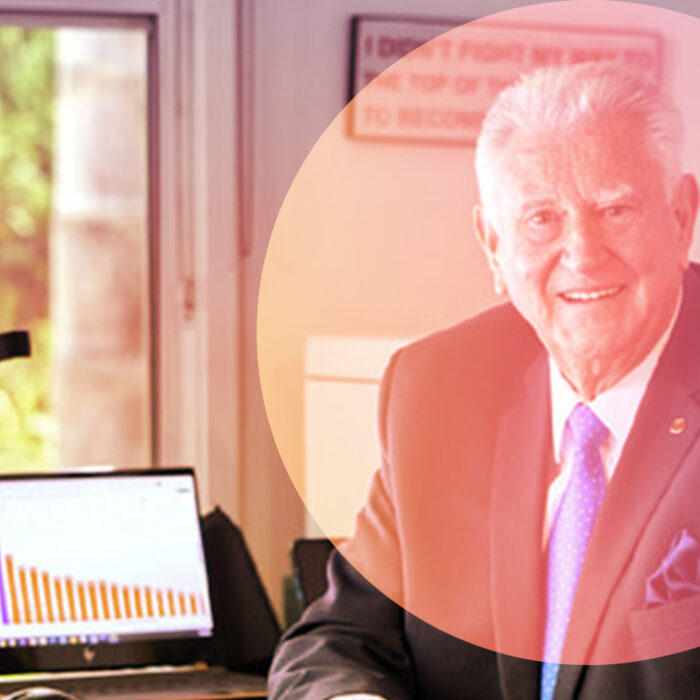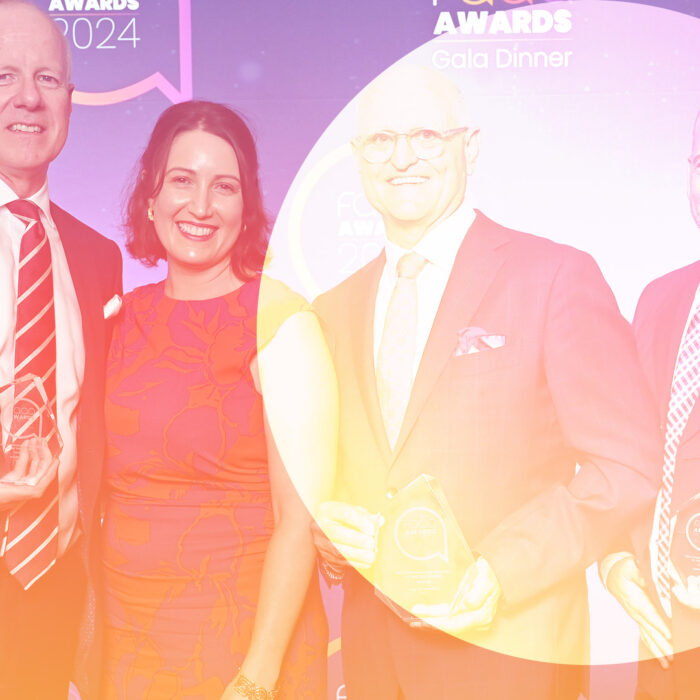A succession plan is something that business owners should consider before starting their own business.
For advisers with their own practice, there should always be a consideration to succession and selling. However, as advisers move towards retirement age, the focus may become sharper.
At the same time, those looking to grow may also seek out businesses to buy or to merge with, without any immediate thought of retirement.
Three FAAA members who have been through the process share their thoughts on succession and the sale of a financial planning business – and what they learned in the process.
 Anne Graham CFP®, sold her interest in her former financial planning business to her partners in that practice in 2024. Now with Kearney Group, Anne moved into a salaried role with a minor equity position following the sale.
Anne Graham CFP®, sold her interest in her former financial planning business to her partners in that practice in 2024. Now with Kearney Group, Anne moved into a salaried role with a minor equity position following the sale.
This was not the first time Anne started making plans about her future and succession planning.
In 2017 she merged her own business with another practice in a view to establishing a succession plan for her future.
However, before she was able to start scaling back her hours, she pulled the plug and decided to leave the business. She was no longer enjoying the business she had helped create and it had started to affect her health and wellbeing.
Aged 60, she felt she has made the right decision.
While, her first thoughts were of retirement, after thinking further and speaking to colleagues in the profession, she realised there were other choices.
She decided to join a larger practice where she would no longer be managing her own business but working as an employed adviser.
Letting go of the business she had created to provide a smooth transition to retirement and conceding it hadn’t worked for her was not an easy decision. Ultimately, it gave her a new lease on life and a renewed sense of purpose.
Stepping away from the responsibilities of managing the business allowed greater focus on what brought her to financial planning in the first place – helping clients secure their best financial futures.
And joining a practice with a more corporatised structure gave Anne more choice now around when she might want to slow down, reduce her hours, and ultimately retire.
Sale, partnership or equity share
 Angela Martyn CFP®, recently retired senior adviser at Yarra Lane, has experience selling businesses. She sold her first financial planning practice in the 1990s and learned some valuable lessons in the process.
Angela Martyn CFP®, recently retired senior adviser at Yarra Lane, has experience selling businesses. She sold her first financial planning practice in the 1990s and learned some valuable lessons in the process.
This time around, after 21 years of building Personal Financial Services, she sold her practice to Yarra Lane following a thorough due diligence process.
At the top of her succession plan wish list was finding a place for her clients to receive the same level of care and attention she had provided them, as well as having advisers she would be happy handing her clients over to.
Ensuring she had a defined 12-month period to finish with the practice was also important. She had previously sold with a three-year contract, which she found too onerous at the time.
This time she stayed longer than she was contracted to but has now, after nearly three years, decided it’s time to pull up stumps.
It was also important to Angela that it was an orderly succession – structured so that it didn’t look like a last-minute sale but one where she could ease her clients into the new business and, over time, continue with them in a reduced role.
Planning early
Angela first thought about selling four years ago and eventually sold it in October 2022. “It took six months from start to finish for the sale to be complete,” she said.
She found her business broker early in the piece, John Collins from Black Pearl Private Clients. They had kept in touch over the years, and she felt he understood the business model she had built.
Angela had a niche practice. “I had a wealthy but mature client base, so I had to figure out how to position it as this would only suit certain businesses. But I had full fee-paying clients, who were paying higher than market fees, which made it attractive for the right business,” she said.
Ultimately, three businesses were interested, but Angela chose the firm she felt was the best fit.
Yarra Lane, part of the AZ NGA stable, was the ultimate choice. They wanted the clients, staff and business model and their experience in acquisitions and mergers supported a smooth transition. Angela reports that the transition has been very successful for all involved – “what they say will happen, happens.”
For clients, there was a bit of repositioning, Angela said. “Clients were now part of a diversified corporate business which also has legal, conveyancing, accounting, SMSF and tax reporting capabilities.
“Because we now had additional services in-house, this opened other opportunities for clients if they wanted to utilise the new services (most of my clients wanted me to be their “principal” and co-ordinate or liaise with other professional advisers) or to gain insights from the technical expertise now at my fingertips. We could also offer in house seminars on specific matters like estate planning, tax etc. At the very least, we can hold their estate documents and liaise with executors or hold the title to properties to ease the sales process.” said Angela.
Preparing for a running start
As an integral part of Angela’s existing team, Shane Griffin CFP® moved to Yarra Lane with her, and financial adviser Olivia Grant CFP® was brought into the practice by Angela. All three worked together to advise and service the client base.
By the time she joined Angela and Yarra Lane, Olivia had been working in financial planning for 14 years and advising for nine years. She began taking meetings with Angela and her clients and is now the primary adviser to those clients.
Before finalising the move into the new business, Angela said she had meetings with each client, explaining what was happening and why, and what they could expect of the new business. “They all appreciated knowing early. Client relationships were long standing, and no client as a result of the transition,” Angela said.
“The fee matrix structures haven’t changed and the way the clients are dealt with is the same. Due to the orderly manner of transitioning clients, there has been no resistance to having Olivia as their new adviser.
“At the end of the day, [Yarra Lane] bought a successful business, so why change what we’re doing – they could see how tied in the clients were.”
 Former financial adviser Michelle Tate-Lovery CFP® started thinking about succession planning in 2000 when she had her business valued. She was the sole adviser, and the whole business was dependent on her. She needed to work out how to maximise the value of her business down the track and realised that if it was all about her, she would have nothing much to sell or crystallise for her efforts and risk.
Former financial adviser Michelle Tate-Lovery CFP® started thinking about succession planning in 2000 when she had her business valued. She was the sole adviser, and the whole business was dependent on her. She needed to work out how to maximise the value of her business down the track and realised that if it was all about her, she would have nothing much to sell or crystallise for her efforts and risk.
At that point, Michelle says she started to think like a bigger business and build the value by making it less principal dependent. “I wanted to be able to pull a few levers as I needed the business to be able to appeal to buyers, without me,” Michelle said.
Michelle said she knew it was going to be a 20-year journey and over that time she implemented a business improvement plan and regularly checked the value of the business to ensure it was increasing.
Staff retention in a small firm was a major concern for Michelle as she built the business. Whilst internal succession planning was part of restructure, it was not going to be the answer ultimately.
But making sure her staff were on board for the journey towards an eventual merger, acquisition, or sale was important.
While the business grew to around six people, and stayed that size for some time, it was also becoming more efficient and more profitable, and in the end had three advisers.
Formal valuations were done every few years, which Michelle said was a powerful exercise that kept building the profitability and efficiency.
Know what you want
The most important things to Michelle when looking at a sale or merger were to be remunerated for what she had built, for her clients to have an enduring offer from the new owners and for her team to have great career paths in any new business.
“I was at the stage of life where I wanted less responsibility after 30 years,” she said.
In 2020, Michelle merged with a larger business. “We could learn from a bigger business, and I could plan to scale down and work part-time, she said.
“It was not difficult to find someone suitable because I’d thought about it from an early stage and knew what my non-negotiables and my terms were.
“I had done an information memorandum – so I knew where we were and where I wanted to be. I had a business plan and knew what to do to get to the next step. The acquiring party had to be attractive to all parties – clients and staff.”
To make sure clients and team were comfortable, they were kept informed with what was happening and why.
Michelle also engaged a business broker, business coaches and business to provide ideas on what the final transaction could look like.
The merger was finally transacted in December 2020, during the extensive COVID lockdowns in Melbourne. “We called it a merger – I was a shareholder of a larger business, and we integrated other team members into our group, Michelle said
“We learned a lot – it was exciting and challenging and we held clients’ hands during the process. We had a compelling story and retained most of our clients.”
Before finally leaving in 2022, Michelle worked with her team in a “pod” within the larger business so nothing much changed from a client perspective, except that they could draw on extra resources to provide a better service.
The exclusive FAAA Professional Practice workshop at FAAA Congress 2025 will focus on succession planning including valuations, knowing your data, developing an information memorandum and the levers to pull to improve your business value. Book your ticket to the 2025 Congress here.
TIPS FOR A GOOD SALE
1. Have your business formally valued – know what you have on offer and understand any gaps you have and what you need to be able to sell
2. Understand the levers you need to pull to improve the value of your business and keep abreast of current valuation multiples
3. Find a way to keep good people
4. Be clear on what you want from the sale process for your clients, the team and yourself
5. Be flexible to other opportunities to achieve your goals
6. Know what you want after the sale
7. Engage business coaches to help keep you on track – you can’t do it all yourself.






